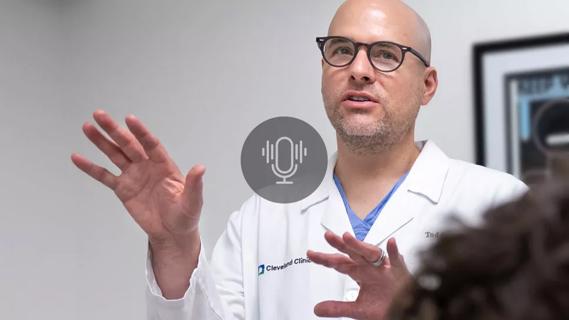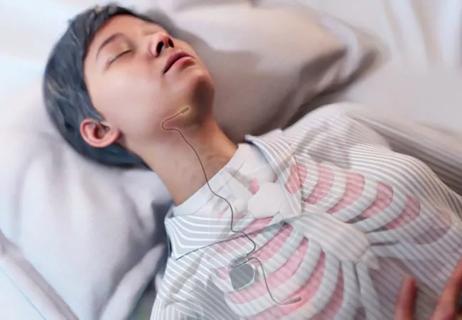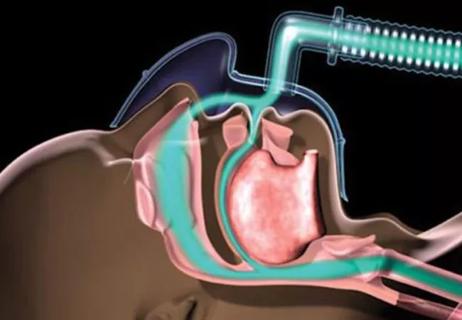A deep dive into the evolution of surgical sleep therapy
One of the biggest benefits to hypoglossal nerve stimulation is the ability to make adjustments post-implantation.
Advertisement
Cleveland Clinic is a non-profit academic medical center. Advertising on our site helps support our mission. We do not endorse non-Cleveland Clinic products or services. Policy
“If [a patient has had] a traditional pharyngeal surgery or base of tongue reduction or hyoid suspension, that's pretty much it,” says Alan Kominsky, MD an otolaryngologist-head and neck surgeon and the Section Head of Surgical Seep and Snoring at Cleveland Clinic. “With a nerve stimulator, there are lots of adjustments that you can make post-implant in order to adjust the efficacy.”
In a recent episode of Cleveland Clinic’s Head and Neck Innovations podcast, Dr. Kominsky delves into the evolution of surgical sleep therapy, ranging from soft tissue surgery to the current gold standard of hypoglossal nerve stimulation as well as some of the innovations on the horizon. He discusses:
Click the podcast player above to listen to the episode now, or read on for a short, edited excerpt. Check out more Head and Neck Innovations episodes at clevelandclinic.org/podcasts/head-and-neck-innovations or wherever you get your podcasts.
Podcast host Paul Bryson, MD: What are the outcomes? What have they looked like for the people that go through the evaluation process?
Alan Kominsky, MD: So, measuring outcomes right now is based on apnea-hypopnea index. Are we decreasing the apnea-hypopnea index? But that's probably not the best way to determine outcomes. We want to see if fatigue gets better. We want to see that there are less cardiovascular or neurovascular events. We don't have that data yet. In fact, we don't have that data for CPAP either, but that's a whole other podcast.
Advertisement
So, the results that we're seeing are reduction of apnea-hypopnea index, significantly either to the mild or many patients are in the normal range after we do the implantation. We take them back for an Inspire® titration study, and so here is where some work still needs to be done. How long of a time at a certain setting on the device do you need to say that this is a success?
And we're still working on that. That's something that really needs to be standardized, and we're not quite there yet, just because it's so new. We're only 10 years into this, and in medical terms, 10 years, that's a baby still.
But given what we're seeing in our results, we're probably 75-80% successful in reducing the apnea-hypopnea index. Our results for time of usage are amongst the tops in the country. So, we're getting almost six hours per night of use for our patients who are using the hypoglossal nerve stimulator, which is tremendous.
I also have to say that we co-manage our patients with the Sleep Center. So, I have partners over in the Sleep Center who are medical sleep medicine physicians, not surgeons, and they activate the device about a month after implantation, and they are following and adjusting. And I think this co-managing of patients has really led to a significant increase in our success rate.
Dr. Bryson: It seems like there's a lot of variables when you're trying to measure success and what is a meaningful success for the patient, and also with some of the objective measures that we have. So, it seems like there's a lot of nuance.
Advertisement
Dr. Kominsky: There is a lot of nuance, and that will continue to be refined as time goes forward. But I can't tell you the number of patients who have told me this has changed my life. That's a tremendous, tremendous success to hear that kind of feedback.
Dr. Bryson: Yeah, I mean, it's just critical. I mean, you think about all the things that quality sleep provides. We didn't even really dig into the neurovascular, cardiovascular, cognitive things that we presume to be beneficial, and that's over years, whereas they otherwise would have some number of hours of night of worse sleep magnified over time.
Dr. Kominsky: Right. This is a cumulative problem. When people come to me and they say, do I really have to treat this? I feel fine. I compare them to a car. You can get a car and never change the oil. It will run really, really well for many years, but after a while, things will start to go off track and break down, and treating sleep apnea is very much like that. As time goes on and it's cumulative and the inflammation and the vascular inflammation goes on, things will start to break down, and you get that increased risk of coronary artery disease, stroke risk, cognitive defects, hypertension. It just goes on and on.
Advertisement
Advertisement

HNS device offers new solution for those struggling with CPAP

Study shows comparable success rates to tongue base dependent epiglottic collapse

Cleveland Clinic study finds that durable weight loss is key to health benefits

Novel procedures provide options for patients who can’t tolerate CPAP

A look at how custom-fitted oral appliances work and when they’re a good fit for patients

For patients with moderate to severe OSA who are intolerant of traditional CPAP therapy, HNS may provide a welcome improvement to QoL

Device features, desensitization strategies can help

Screening tool helps flag conditions that warrant further attention